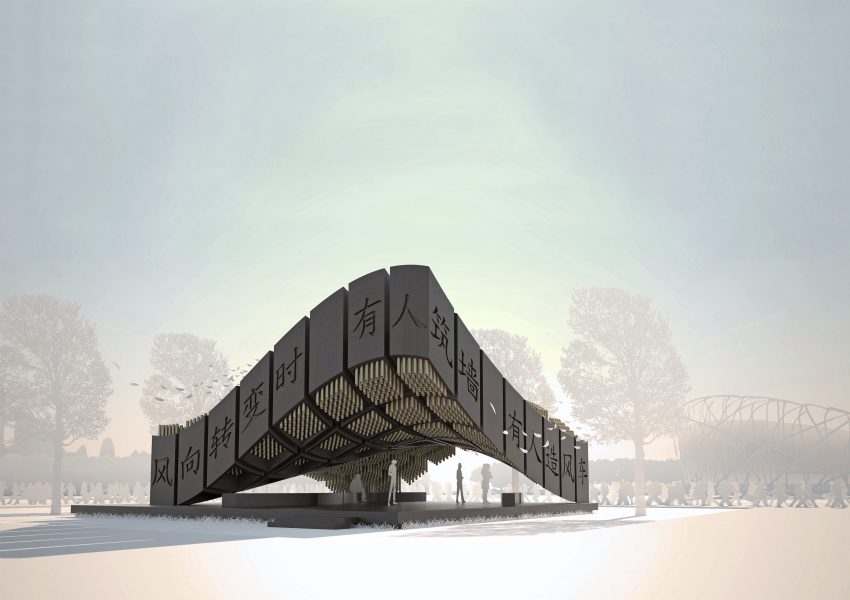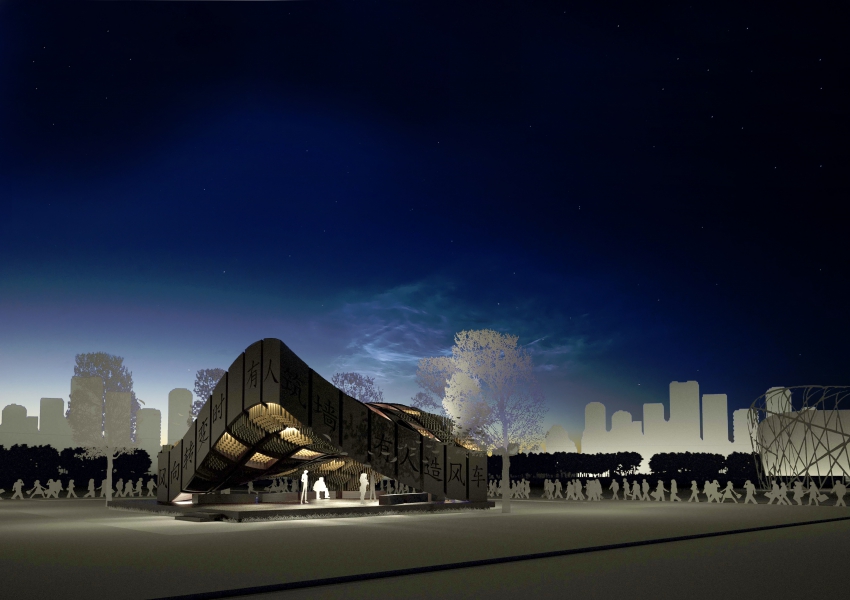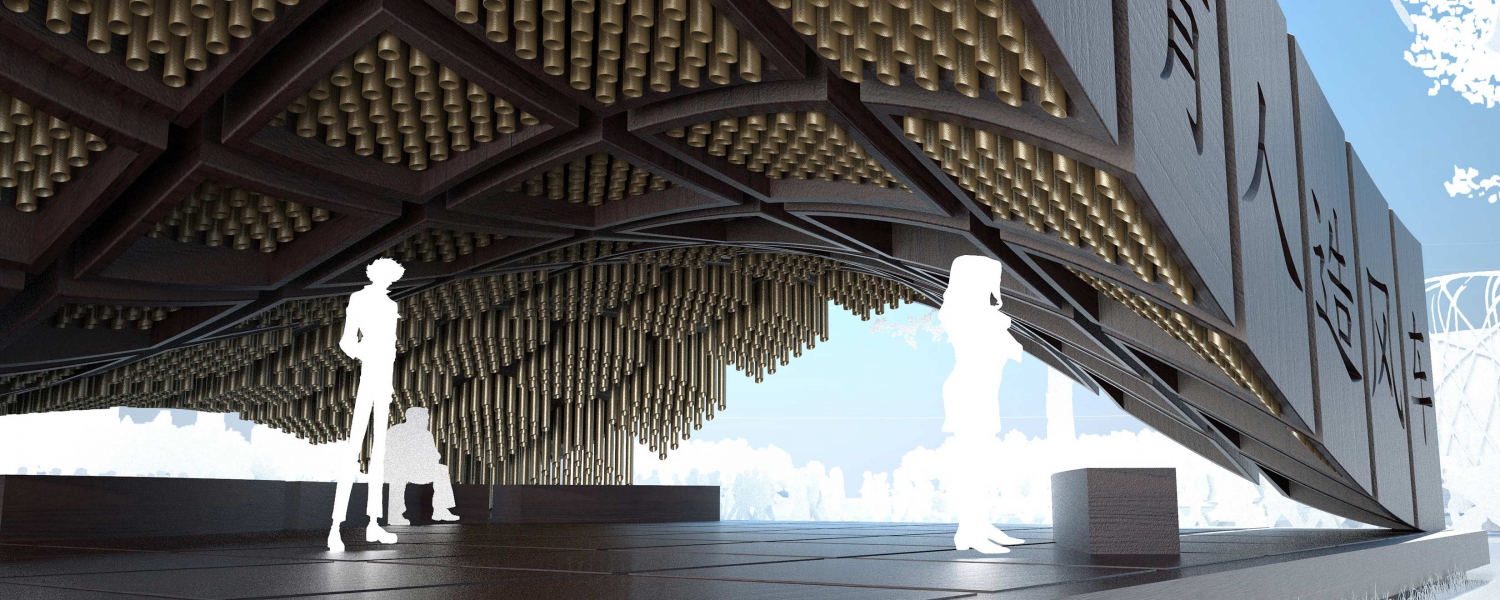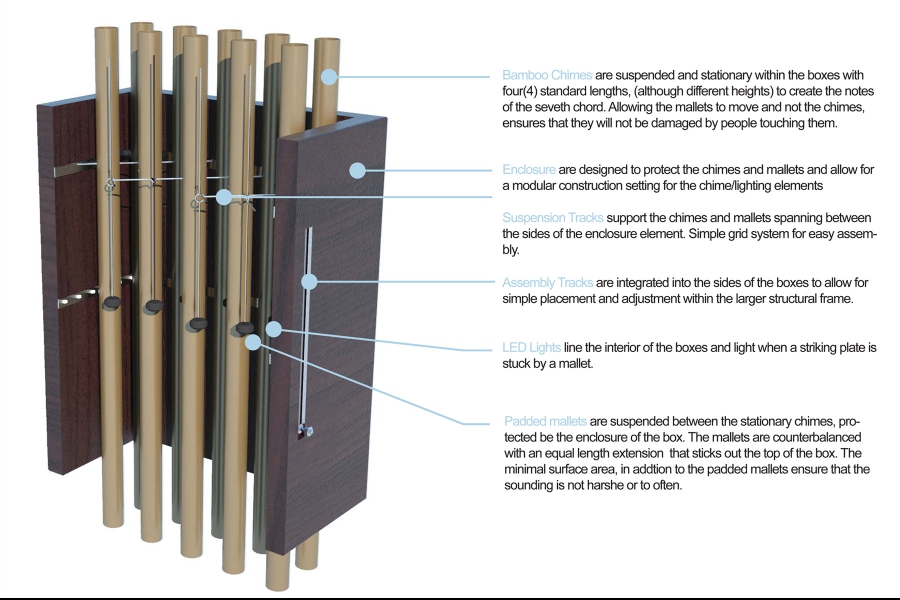During the day, small padded mallets catch the wind to make a soft, harmonious sound. The mallets have been envisioned as the active part of the chime system in order to achieve two goals. One – Increase the durability of the chimes by fixing them in place. Two- Reduce the amount of surface area the wind can catch. The resulting tone is melodic, relaxing and inviting, with notes within the 7th Chord, beckoning the visitor to come and reflect, or find respite from the sun on one of the benches. At night, the chimes toll just as they do during the day, but each box is illuminated whenever its chimes go off, creating a dynamic and intriguing music-light display.
The formalization of the building is inspired by the analysis of the C major 7th chord: the four notes that define it give shape to the front, the back and the interior of the installation. Unlike an orthogonal building, this structure catches the wind differently depending on how it is blowing, so it is a dynamic system that is always changing. This dynamic form also allows the pavilion to be approached from any side, without being defined by a frontage. A grid structure supports the boxes and carries the lateral and gravity load to the ground through 3 connection points within the boxes competing a rigid ‘C’ frame. This methodology insures that the cantilever can be rigid while removing the need to penetrate the ground plane.
The exterior of the pavilion carries an inscription of a Chinese proverb, which translate to “When the direction of the wind changes, some people build walls and some people make windmills.” Because there are always two different directions people can take, and it is important to recognize the significant of an event like China International Architecture Biennial, which supports the ideals of associated with the cultivating the global community.



